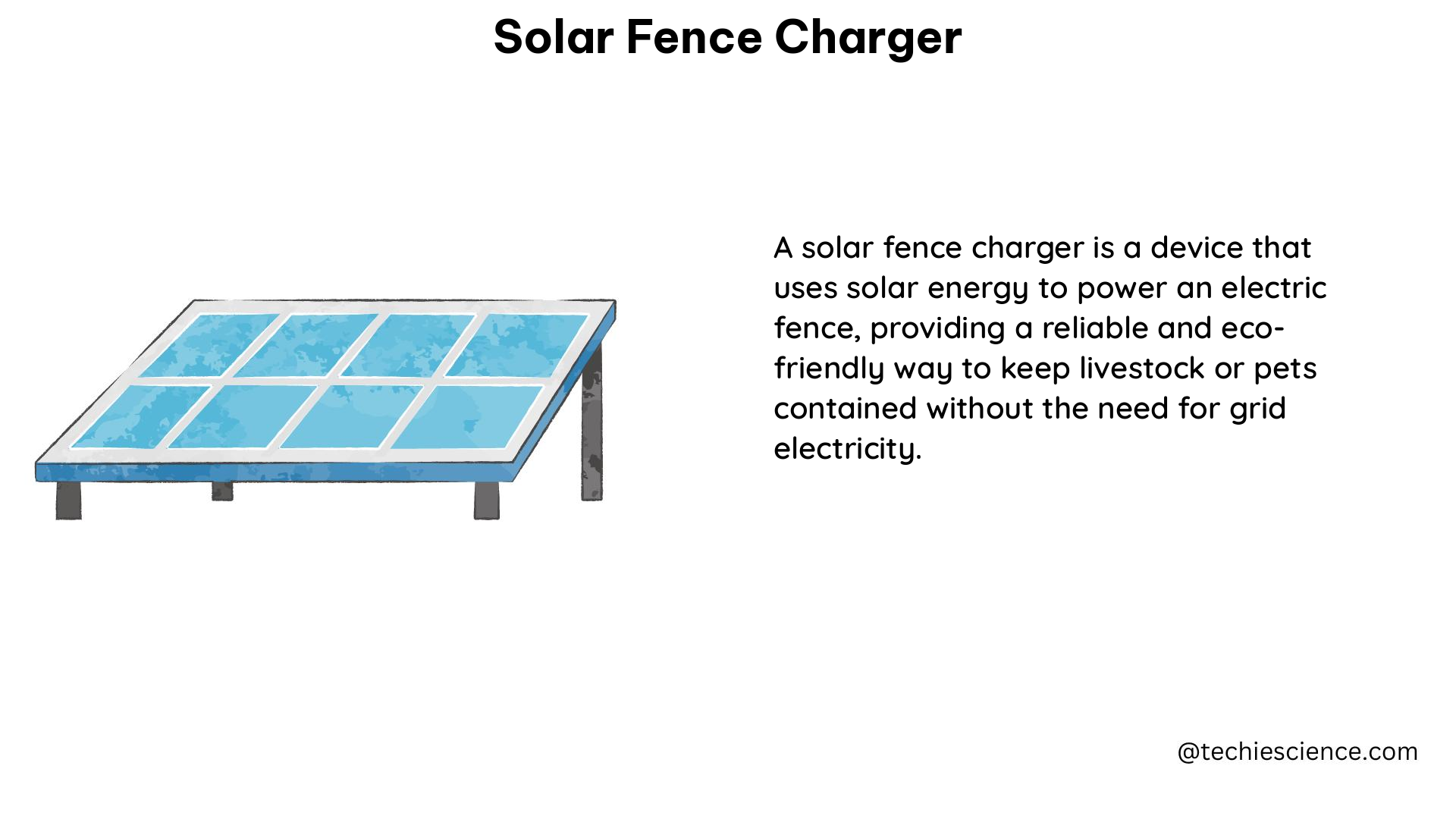Solar fence chargers are an efficient and eco-friendly solution for powering electric fences, especially in remote or off-grid locations. These innovative devices convert sunlight into electrical energy, which is then used to charge the fence’s battery and maintain its voltage, ensuring a reliable and effective barrier for your property or livestock. In this comprehensive guide, we’ll delve into the technical specifications and key aspects of solar fence chargers, providing you with a detailed playbook to help you make an informed decision and ensure the optimal performance of your electric fencing system.
Joule Rating: The Power Behind the Pulse
The joule (J) rating is a crucial factor to consider when selecting a solar fence charger. This unit of energy indicates the amount of electrical charge the charger can deliver, which is essential for containing larger animals or deterring predators. A higher joule rating means the charger can provide a stronger electric shock, making it more effective in various applications.
For instance, the Solar IntelliShock® 60 Energizer from Premier1Supplies boasts a 0.60 joule rating, making it suitable for containing sheep, goats, poultry, swine, cattle, and horses. This level of power ensures that your electric fence can effectively deter even the most persistent and determined animals.
Solar Panel Specifications: Harnessing the Sun’s Energy

The solar panels used in solar fence chargers vary in size, wattage, and efficiency, all of which play a crucial role in the charger’s performance. The size of the solar panel determines the amount of sunlight it can capture, while the wattage indicates the electrical power it can generate.
The Solar IntelliShock® 60 Energizer, for example, comes equipped with a 10-watt glass solar panel. This panel is designed to efficiently recharge the charger’s battery on sunny days, ensuring a consistent and reliable power supply for your electric fence.
Battery Capacity: Powering Through the Night
The battery capacity of a solar fence charger is measured in ampere-hours (Ah) and indicates how long the charger can operate without sunlight. A larger battery capacity means the charger can provide power for a more extended period, making it ideal for areas with limited or intermittent sunlight.
The SolarStop™ 80 Fence Energizer kit, for instance, includes a 12V 12Ah SLA (sealed lead acid) battery. This robust battery can power the charger for an extended period, ensuring your electric fence remains operational even during prolonged cloudy or rainy conditions.
Impulse Interval and Current Consumption: Optimizing Efficiency
The impulse interval is the time between each electrical pulse delivered by the charger, while current consumption indicates the amount of electrical current the charger draws. These factors play a crucial role in the overall efficiency and performance of the solar fence charger.
The SolarStop™ 80 Fence Energizer, for example, has an impulse interval of 1.5 seconds and a current consumption of 64-45 mA in Mode II. This combination of impulse interval and current consumption ensures that the charger delivers an effective and efficient electrical pulse, while minimizing the drain on the battery.
Grounding System: The Foundation of Effective Fencing
A proper grounding system is essential for the effective operation of a solar fence charger. The grounding system ensures that the electrical charge is safely dissipated into the earth, preventing any hazards or damage to the charger or the surrounding environment.
Proper grounding is crucial for maintaining the integrity of the electric fence and ensuring the safety of both animals and humans. It is essential to follow the manufacturer’s recommendations and local regulations when installing the grounding system for your solar fence charger.
Storage and Battery Life Preservation: Extending the Lifespan
To ensure the longevity and optimal performance of your solar fence charger, proper storage and maintenance are crucial. It is recommended to store the charger indoors at room temperature and out of direct sunlight when not in use. Additionally, the battery should be kept above 40% charged to prevent damage from prolonged discharge.
By following these storage and maintenance guidelines, you can extend the lifespan of your solar fence charger and ensure that it continues to provide reliable and efficient power to your electric fencing system.
Conclusion
Solar fence chargers are a reliable and sustainable solution for powering electric fences, offering a range of technical specifications and features to meet the diverse needs of farmers, ranchers, and homeowners. By understanding the key aspects of joule rating, solar panel specifications, battery capacity, impulse interval, current consumption, grounding system, and proper storage and maintenance, you can make an informed decision and ensure the optimal performance of your electric fencing system.
Remember, the success of your solar fence charger installation depends on carefully considering these technical details and following the manufacturer’s recommendations. With this comprehensive playbook, you’ll be well-equipped to navigate the world of solar fence chargers and create a reliable and effective electric fencing solution for your property.
References:
– Beesource Thread: Solar Fence Charger for Bears
– Premier1Supplies: Solar IntelliShock® 60 Energizer
– Premier1Supplies: SolarStop™ 80 Fence Energizer
– Farmers Weekly: Tips to Get the Perfect Solar-Powered Electric Fence Setup

The lambdageeks.com Core SME Team is a group of experienced subject matter experts from diverse scientific and technical fields including Physics, Chemistry, Technology,Electronics & Electrical Engineering, Automotive, Mechanical Engineering. Our team collaborates to create high-quality, well-researched articles on a wide range of science and technology topics for the lambdageeks.com website.
All Our Senior SME are having more than 7 Years of experience in the respective fields . They are either Working Industry Professionals or assocaited With different Universities. Refer Our Authors Page to get to know About our Core SMEs.